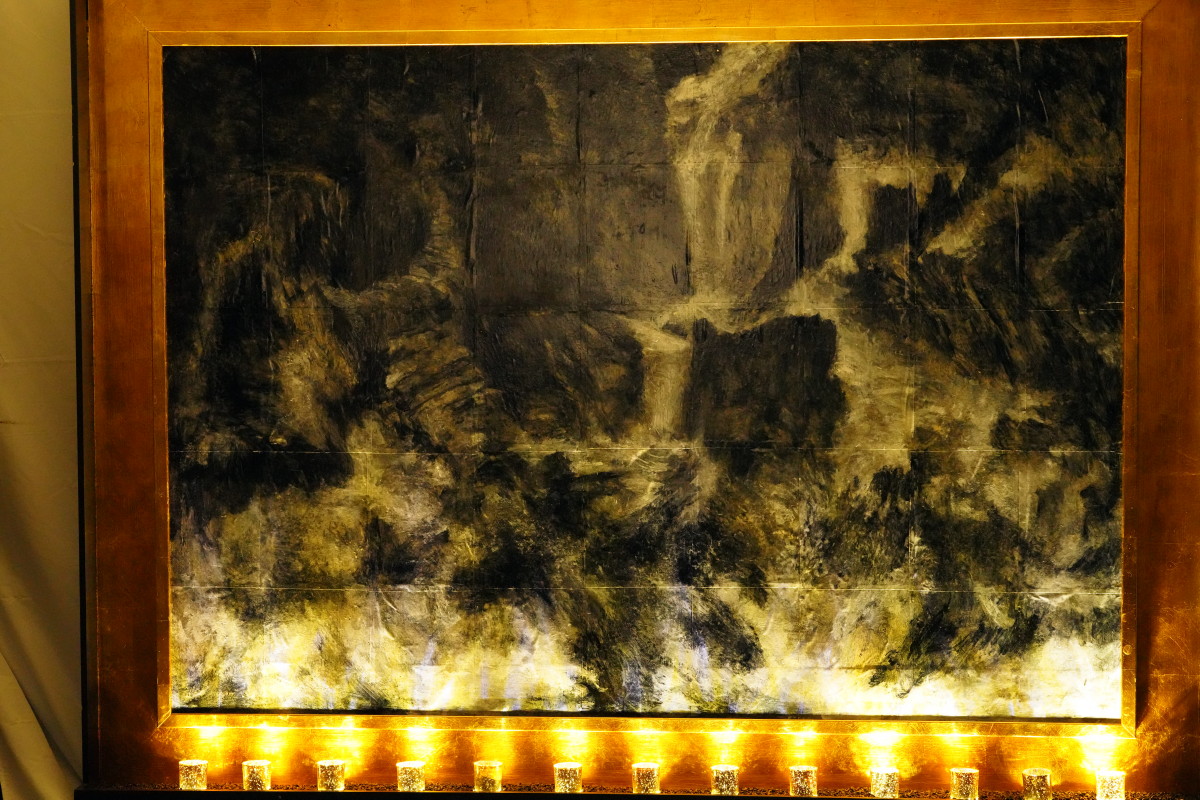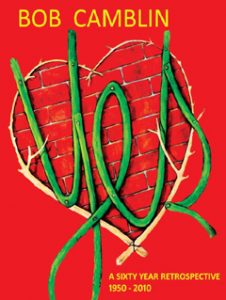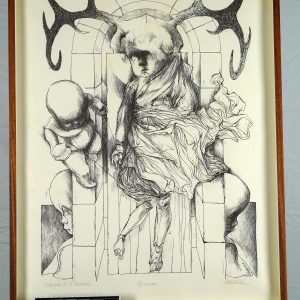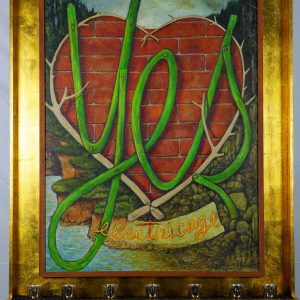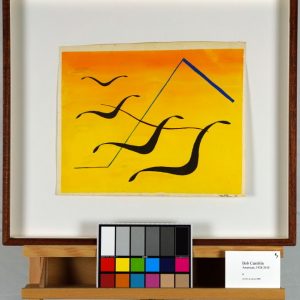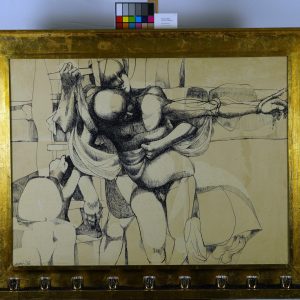Description
Where The Forest Meets The Ocean, no dateReliquary, casein on typing paper/mixed media
Unsigned (what’s the reason for this?)
51.25 x 72.5 in. (image)
65 x 85.5 x 6 in. (frame)
original, includes certificate of authenticity from ArtTrust
The painting “Where The Forest Meets The Ocean” presents a dark, textured landscape, which evokes a cave-like atmosphere. It features abstract and suggestive forms that appear to emerge from the darkness, blending into a shadowy background. The predominant use of browns, blacks, and ochres contributes to the image’s moody, introspective tone, while the brushstrokes give it a sense of movement and depth. The play of light and shadow appears to hint at figures or landscapes obscured by mist or darkness. The artist used printer paper and gesso to create a canvas that holds multitudes of stories.
From a Zen perspective, the painting could be seen as a meditation on emptiness and form, where the indistinct shapes invite viewers to let go of their need to identify or label what they see. The darkness can represent the “void,” an essential concept in Zen that points to the impermanence and formless nature of reality. In this case, the viewer is called to experience the painting without judgment, simply allowing the ambiguous forms to evoke whatever emotions or thoughts arise.
Applying the I Ching, this artwork could relate to the hexagram “Darkening of the Light” (Ming Yi), which represents a time when clarity is obscured, and one must adapt to challenging circumstances. In this interpretation, the dark palette and unclear shapes reflect the need for patience and inner wisdom when external circumstances are dim or confusing. The suggestion of emerging forms indicates potential insight or revelation that can arise even in times of uncertainty.
The combination of Zen and I Ching perspectives suggests that the painting speaks to the human experience of navigating through darkness or difficult times with acceptance and mindfulness. It invites the viewer to embrace uncertainty and look beyond immediate appearances to find meaning or truth. The movement and light within the dark environment can symbolize the gradual emergence of understanding, much like finding one’s path in a fog.
The artwork draws from traditions of abstract expressionism, with its emphasis on texture and gestural brushstrokes reminiscent of artists like Anselm Kiefer or Antoni Tàpies, who often explore themes of memory, history, and existential contemplation. Its dark tones also echo elements of Romanticism, where the sublime is depicted through shadow and light interplay, often evoking feelings of awe and introspection. The lack of clearly defined forms encourages a subjective interpretation, inviting viewers to project their own experiences and emotions onto the canvas.
*Shipping cost will vary, please inquire at sales@camblingallery.com before purchasing.
Currently ships from Oregon, USA
Member of artnet? Apply for a discount! Inquire about intergallery and permanent loans for museums.
“Where The Forest Meets The Ocean” was featured in his Yes Retrospective
Reproductions of this drawing are available in multiple sizes!
Click here to use our high-resolution viewer!
This artwork is available with a non-fungible token to ensure traceability and transparency of provenance.
The royalty factor – Unlike traditional artworks, such as paintings, mosaics, statues, and the like, NFTs can be programmed to provide royalties to you every time the painting (and token) is sold and resold – for eternity. That mind-bending Camblin you sold could be worth millions one day and provide income for your great-great-great grandkids!
Anti-forgery – The central idea underpinning NFTs is that they are built on the blockchain, which is meant to offer advanced security. Think of it like an un-erasable and un-avoidable copyright.
Easy authentication – Another compelling aspect of NFT art and NFTs in general is the ability to quickly and easily authenticate items, as the record of ownership is scrupulously kept on the blockchain.
